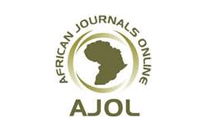Mansoura Veterinary Medical Journal
Document Type
Original Article
Subject Areas
Zoonses and public health
Keywords
Pigeon, E. coli, Salmonella, Zoonoses, human
Abstract
AbstractObjective: To investigate the prevalence of Escherichia coli and Salmonella spp. and their virulence genes and antimicrobial resistance in pigeons and humans in El-Dakahlia province, Egypt.Design: Descriptive study.Samples: A total of 274 samples were collected from pigeons (148 cloacal swabs, 20 feather swabs, and 26 egg samples), pigeons’ environment (21 feed samples and 21 water samples), and their contact humans (20 hand swabs and 18 stool samples) in El- Dakahlia province, EgyptProcedures: Cultural media, biochemical tests, and serotyping were used to isolate and identify E. coli and Salmonella from the collected samples. Moreover, multiplex-PCR for detecting virulence genes and antibiotic sensitivity tests were conducted on some E. coli and Salmonella isolates.Results: The overall infection rates of E. coli and Salmonella spp. were 79.2% and 4.0%, respectively. Various serotypes of E. coli and Salmonella were recorded. Different virulence genes such as stx1, stx2, and eaeA were detected in 19 of 20 E. coli isolates, as well as invA, hilA, and fimH virulence genes were identified in 9 Salmonella isolates. The results of the antibiotic sensitivity test showed that all E. coli (n=20) and Salmonella (n=9) isolates were resistant to erythromycin, moreover, all nine Salmonella isolates were resistant to nalidixic acid. Conclusion and clinical relevance: The results of this study indicate the role of pigeons in the transmission of both E. coli and Salmonella to humans. Therefore, strict hygienic measures should be taken into consideration when dealing with pigeons to diminish the potential transmission of both microorganisms.
How to Cite This Article
Hagag, Ahmed; Naguib, Doaa; Mohamed, Amro; and Elgohary, Adel
(2022)
"Prevalence, virulence genes, and antibiotic resistance of Escherichia coli and Salmonella spp. isolated from pigeons and humans,"
Mansoura Veterinary Medical Journal: Vol. 23:
Iss.
1, Article 4.
DOI: https://doi.org/10.21608/mvmj.2021.88961.1072
Receive Date
2021-08-03
Accept Date
2021-09-06
Publication Date
3-1-2022






